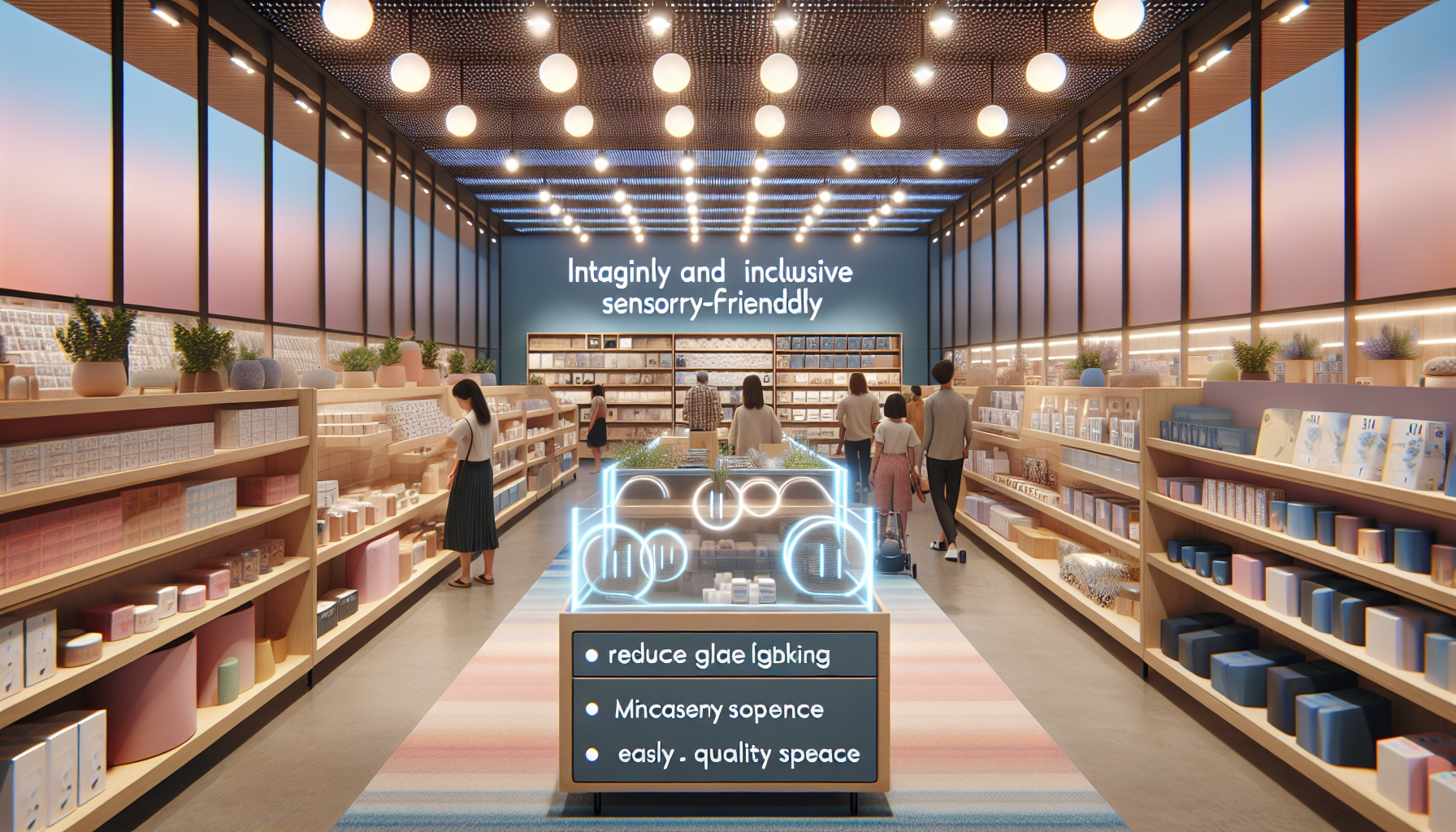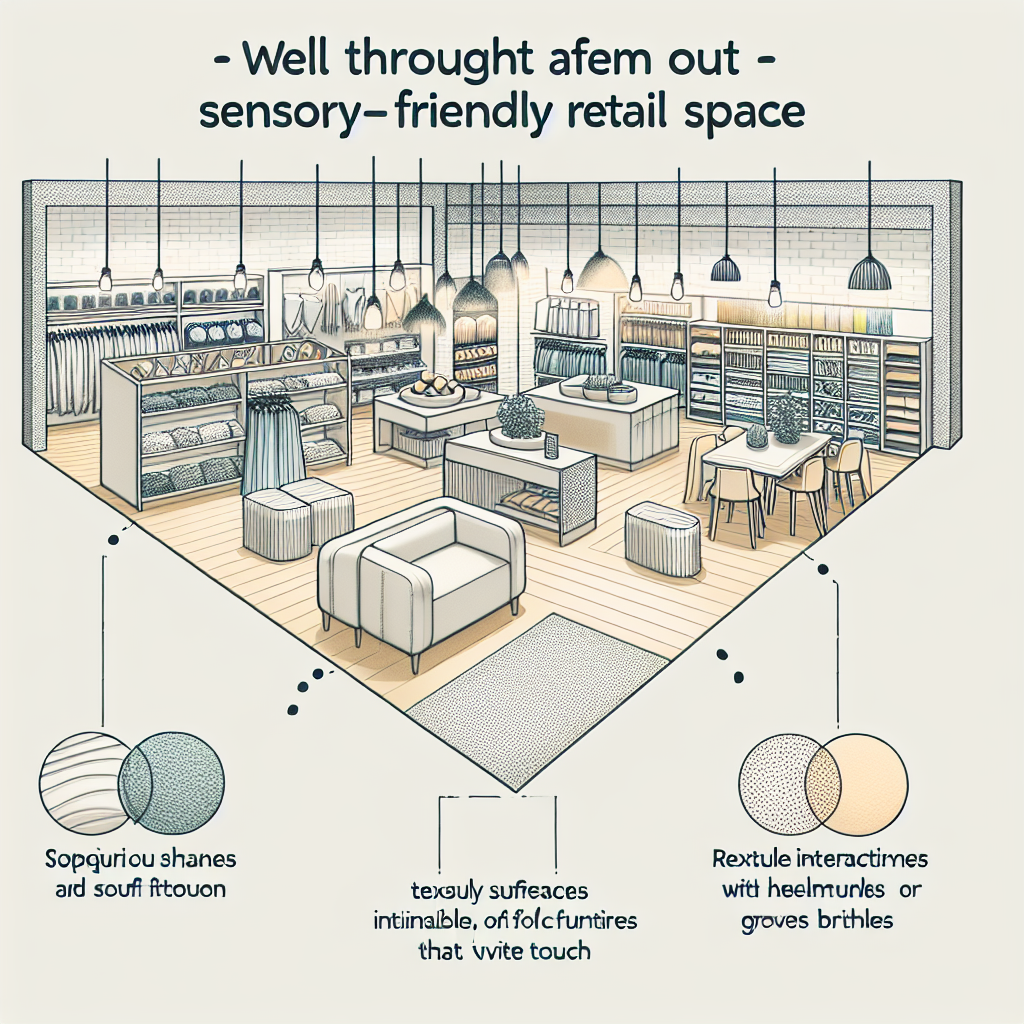In an increasingly competitive marketplace, retailers are seeking innovative ways to attract and retain customers. One approach that has gained momentum is the creation of sensory-friendly environments within retail spaces. These environments are designed to accommodate the sensory needs of all individuals, including those with sensory processing disorders, autism spectrum disorders, and other neurodiverse conditions. By understanding and implementing best practices for sensory-friendly retail environments, businesses can offer a more inclusive shopping experience that caters to a wider audience.
Understanding Sensory Processing and Its Impact on Retail Experiences
Sensory processing refers to the way the nervous system receives and responds to sensory information. For some individuals, sensory processing can be challenging, leading to discomfort or even distress in environments that are too stimulating. Retail spaces with bright lighting, loud music, and a multitude of visual stimuli can be overwhelming for these customers. Providing a sensory-friendly environment can make shopping a more pleasant experience for everyone, particularly for those with heightened sensitivities. For a deeper understanding of sensory health, consider exploring Avix Health’s comprehensive guide on Sensory Health.
Lighting and Visual Comfort
One of the key components of a sensory-friendly retail environment is appropriate lighting. Harsh fluorescent lights can be replaced with softer LED options that mimic natural light. Dimmer switches can also be utilized to adjust light levels based on the time of day or specific needs of customers.
Visual comfort can also be enhanced by using calming colors and clear signage throughout the store. Simplifying the visual environment by decluttering and organizing products can reduce sensory overload and make shopping easier for those with difficulties processing visual information.
Soundscaping and Acoustic Considerations
Sound is another critical factor in creating a sensory-friendly retail space. Background music, if used, should be kept at a low volume and feature soft, non-invasive melodies. Acoustic design elements, such as sound-absorbing panels or materials, can help to minimize echoes and reduce noise levels.
In some cases, retailers may offer specific shopping hours with reduced sensory stimuli, such as no background music and lower lighting levels. This can be especially beneficial for individuals who are particularly sensitive to auditory input.
Tactile Experiences and Movement
The tactile experience in a store includes everything from the flooring to the materials used for displays and products. Smooth, non-textured surfaces and rounded edges can prevent discomfort for those who are sensitive to touch. Additionally, creating wide aisles and open spaces allows for ease of movement and can prevent feelings of confinement.
Retailers can also consider incorporating interactive elements that engage the tactile sense in a controlled manner, such as product samples or demonstration areas with sensory-friendly materials.
Creating a Calming Atmosphere
Creating an overall calming atmosphere is essential for a sensory-friendly retail environment. This can be achieved through the use of natural elements, such as plants or water features, and by incorporating quiet zones where customers can retreat if they need a break from shopping.
Fragrance is another aspect to consider—avoiding strong scents or using natural, subtle aromas can help prevent discomfort for those who are sensitive to smells.
Staff Training and Customer Support
Staff training is vital for the success of a sensory-friendly retail initiative. Employees should be educated on the importance of sensory-friendly practices and how to assist customers with sensory sensitivities. This includes recognizing signs of sensory overload and knowing how to provide support or adjustments as needed.
Integrating Sensory-Friendly Practices into Retail Design
When integrating sensory-friendly practices into retail design, it’s important to consider the layout, materials, and overall atmosphere of the space. For design inspiration, one might look at The Benefits of Sensory Engagement in Museum Design, which highlights the positive impact of sensory considerations in public spaces.
Layout and Flow
The layout of a retail environment plays a crucial role in how customers navigate and experience the space. A well-thought-out layout that allows for easy navigation and reduces crowding can significantly improve the sensory-friendliness of a store.
Material Selection
The materials used in the construction and display of products should be chosen with sensory considerations in mind. Non-reflective surfaces, soft textiles, and comfortable seating can all contribute to a more pleasant tactile and visual experience.
Technology and Sensory Integration
Technology can be used to enhance the sensory-friendly nature of a retail space. Interactive digital displays with adjustable settings, for example, can provide personalized visual and auditory experiences. Additionally, mobile apps can be designed to help customers with sensory sensitivities plan their shopping trips by providing information on the store’s layout, sensory features, and quietest shopping times.
External Resources for Further Reading
For those interested in the intersection of sensory processing and technology, niche resources such as the STAR Institute’s research on Sensory Processing offer valuable insights. Additionally, the Sensory Processing Disorder Foundation provides a wealth of information on sensory challenges and strategies for creating supportive environments.
Conclusion
Implementing best practices for sensory-friendly retail environments is not just about inclusivity; it’s also good business sense. By catering to the needs of all customers, retailers can create a welcoming atmosphere that encourages longer visits and repeat business. For more information on sensory-friendly solutions and their benefits in various settings, consider exploring articles like Sensory-Friendly Solutions for Workplace Productivity and Creating Sensory Friendly Classroom Settings for Diverse Learners.
In today’s diverse society, sensory-friendly retail environments are not just a trend but a necessary evolution of customer service. By embracing these practices, retailers can demonstrate their commitment to accessibility and enhance the shopping experience for all.



